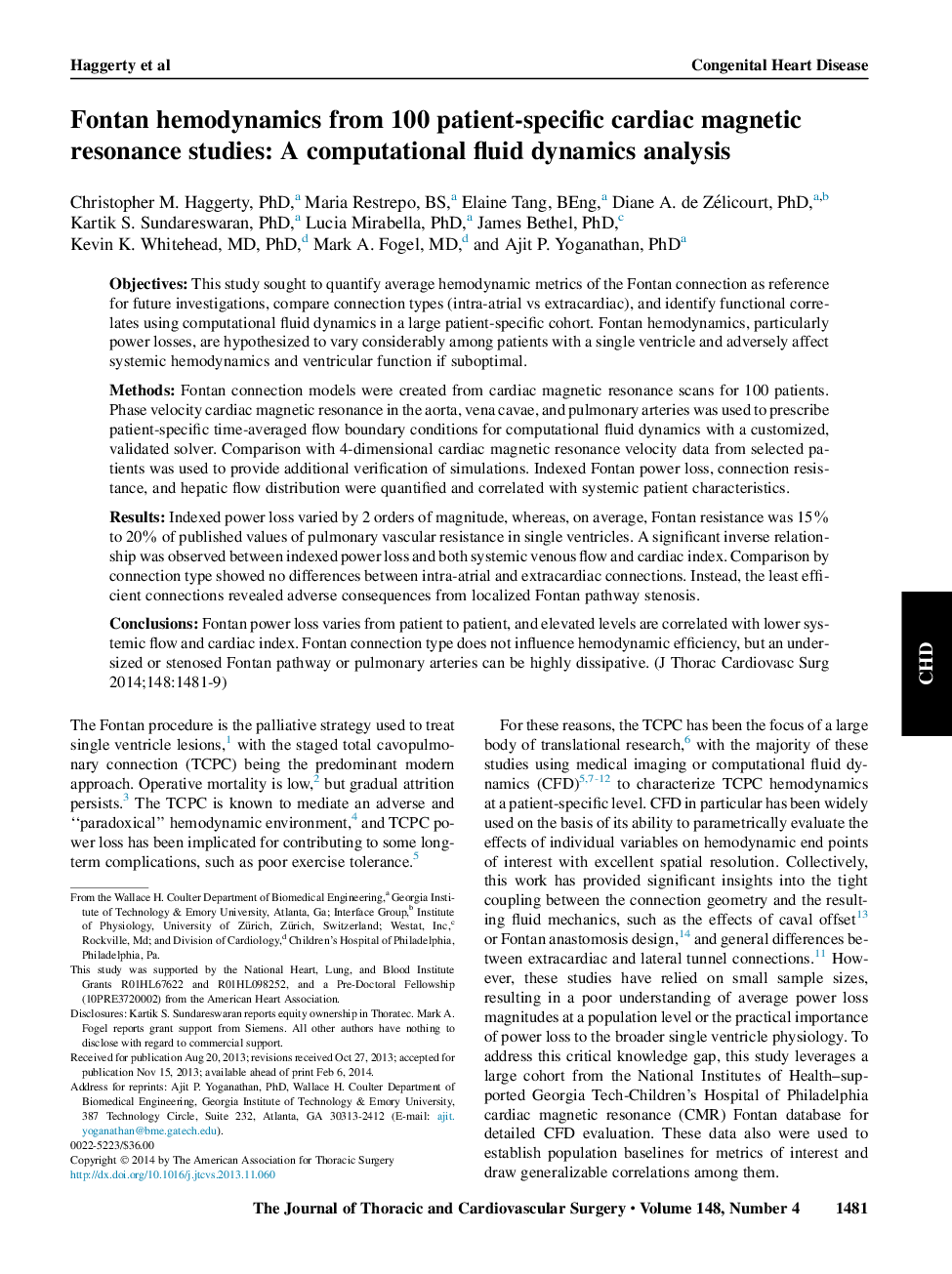| کد مقاله | کد نشریه | سال انتشار | مقاله انگلیسی | نسخه تمام متن |
|---|---|---|---|---|
| 2980409 | 1578606 | 2014 | 9 صفحه PDF | دانلود رایگان |
ObjectivesThis study sought to quantify average hemodynamic metrics of the Fontan connection as reference for future investigations, compare connection types (intra-atrial vs extracardiac), and identify functional correlates using computational fluid dynamics in a large patient-specific cohort. Fontan hemodynamics, particularly power losses, are hypothesized to vary considerably among patients with a single ventricle and adversely affect systemic hemodynamics and ventricular function if suboptimal.MethodsFontan connection models were created from cardiac magnetic resonance scans for 100 patients. Phase velocity cardiac magnetic resonance in the aorta, vena cavae, and pulmonary arteries was used to prescribe patient-specific time-averaged flow boundary conditions for computational fluid dynamics with a customized, validated solver. Comparison with 4-dimensional cardiac magnetic resonance velocity data from selected patients was used to provide additional verification of simulations. Indexed Fontan power loss, connection resistance, and hepatic flow distribution were quantified and correlated with systemic patient characteristics.ResultsIndexed power loss varied by 2 orders of magnitude, whereas, on average, Fontan resistance was 15% to 20% of published values of pulmonary vascular resistance in single ventricles. A significant inverse relationship was observed between indexed power loss and both systemic venous flow and cardiac index. Comparison by connection type showed no differences between intra-atrial and extracardiac connections. Instead, the least efficient connections revealed adverse consequences from localized Fontan pathway stenosis.ConclusionsFontan power loss varies from patient to patient, and elevated levels are correlated with lower systemic flow and cardiac index. Fontan connection type does not influence hemodynamic efficiency, but an undersized or stenosed Fontan pathway or pulmonary arteries can be highly dissipative.
Journal: The Journal of Thoracic and Cardiovascular Surgery - Volume 148, Issue 4, October 2014, Pages 1481–1489
